This post may contain affiliate links, from which we earn an income. Click here to read our affiliate policy.
Adventurous, off-the-beaten-path, and absolutely beautiful, Armenia is a once-in-a-lifetime destination.
With a chequered history and fascinating cultural identity, Armenia is a country of contrasts. From the glitz and glamour of Yereven to the high mountain passes and ancient monasteries, there’s much to discover here.
We spent three months exploring Armenia’s four corners. This guide shares the very best things to do and see in Armenia, plus useful travel tips and information to help you plan your perfect trip.
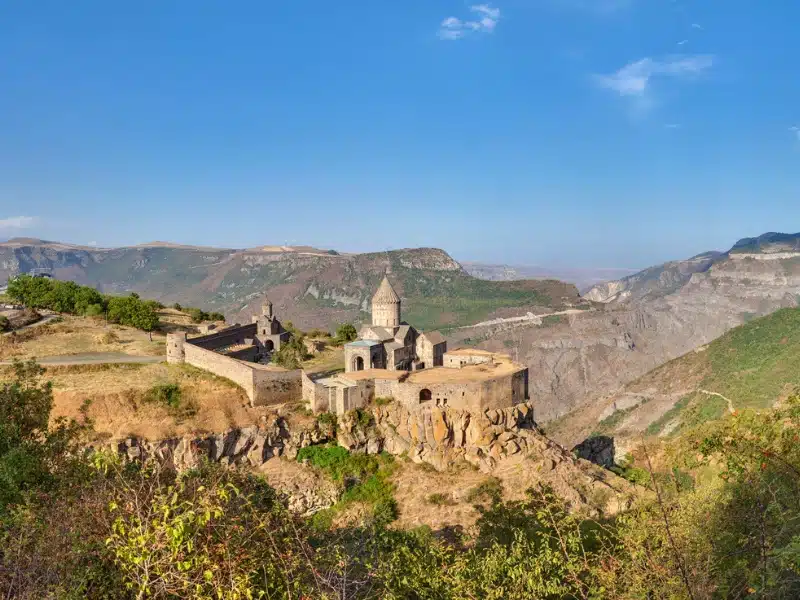
Yerevan
A capital city like no other, Yerevan feels slightly at odds with the rest of the country. There is a lot of wealth on display and many designer stores and expensive restaurants like in London or Paris.
But look past that for the history and culture of this melting pot of a city, where Ottoman Turkey, Iran, Europe, and Soviet Russia have all played a part in its development.
A good way to start your time in Yerevan is with this free walking tour. The knowledgeable local guide will take you on a three-hour wander around the city, sharing history and facts about Armenia’s history, architecture, language, food, religion, art, and so much more. If you prefer a smaller group or private tour, we recommend this popular walking tour of Yerevan with a local guide.
If you want to go it alone, there are several must-sees in Yerevan. First up is Republic Square, where the buildings showcase the city’s unique ‘pink city’ architecture and the dancing fountains. A choreographed light show set to music takes place at 9pm every evening in summer. The show draws large family crowds, so go early if you want a good view.
Nearby, the iconic Cascade Complex is a huge staircase of 572 steps that connects the city center to Haghtanak Park. At the base of the cascade is the Cafesjian Center for the Arts, which exhibits contemporary artworks. As you climb, terraces offer stunning views of Yerevan and Mount Ararat.
The Opera House on Freedom Square is an impressive building showcasing Soviet-era architecture and is a focal point for arts and culture. Another must-visit is Victory Square, home to the monumental Mother Armenia statue., built to commemorate the victory of the USSR in World War II when Armenia was under Soviet control.
There are two Yerevan markets that you should visit: the Vernissage Market, a delightful open-air market held on weekends where you’ll find local crafts and souvenirs, and the Gum Market, where you can buy local produce, including fresh and dried fruits, spices, and cheeses.
The Sergei Parajanov Museum commemorates one of the most visionary and eclectic filmmakers of the 20th century. Of Armenian descent, Parajanov was known for his unique cinematic style, which blended folklore with surrealism and poetic imagery. The museum houses a comprehensive collection of Parajanov’s artworks, including his films, collages, sculptures, and installations.
The Tsitsernakaberd Memorial Complex honors the 1.5 million victims of the Armenian Genocide, the 1915 systematic destruction of the Armenian people by the Ottoman Empire. A visit to the Armenian Genocide Museum within the complex provides insight into the Armenian Genocide and a deeper understanding of the historical events and their impact on the Armenian people.
At the heart of the complex is the eternal flame that symbolizes the resilience of the Armenian people and their fight for recognition and justice. Adjacent, a memorial wall lists the names of towns and villages where massacres took place, providing a stark and moving reminder of the scale of the tragedy.
It’s no coincidence that the views of Mount Ararat from here are breathtaking. Although now across the border in modern-day Turkey, the sacred mountain and resting place of Noah’s Ark holds a place of profound significance in Armenian culture, history, and identity.
RELATED POST: Armenia Itinerary: An Off-The-Beaten-Path Road Trip
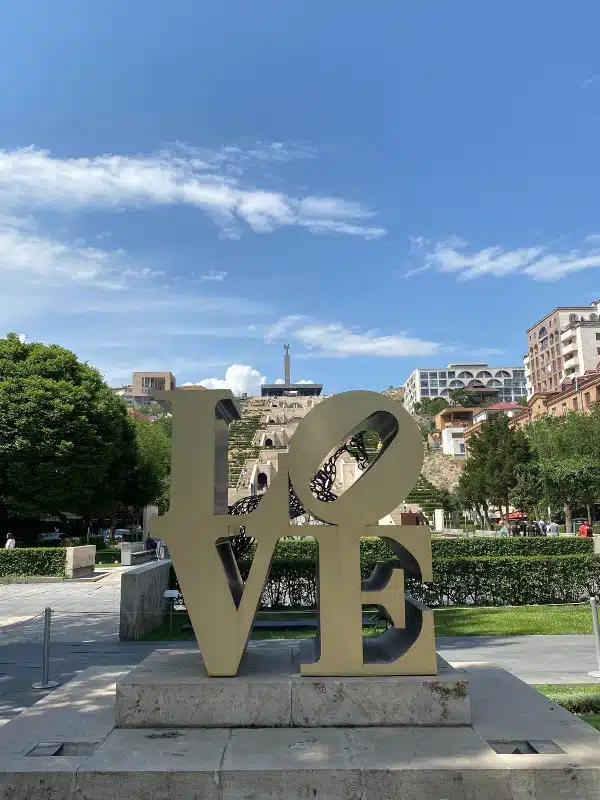
Gyumri
In the northwestern region of Armenia, Gyumri is an underrated city known for its cultural heritage and unique architecture. The Kumayri historic district boasts some of the oldest and most unique architecture in the country, with buildings of distinctive black tuff stone dating back to the 18th and 19th centuries. The 1950s All Saviors Church is a stunning example of Armenian architecture.
In the same square as the church is the Earthquake Memorial, commemorating the 25,000 to 50,000 people killed and 130,000 injured on December 7th, 1988. The magnitude 6.8 earthquake ruptured multiple faults on an active seismic belt that crosses northern Armenia.
The Shirak Museum has a collection of artifacts and exhibits that showcase the city’s rich cultural heritage, and the Dzitoghtsyan Museum of Social Life and National Architecture features exhibits on traditional Armenian architecture and lifestyle.
Take a drive to Gyumri’s Mother Armenia statue, where you can also visit the Black Fortress or Sev Berd, a Russian imperial fortress built during the Russo-Turkish War of 1828 to 1829.
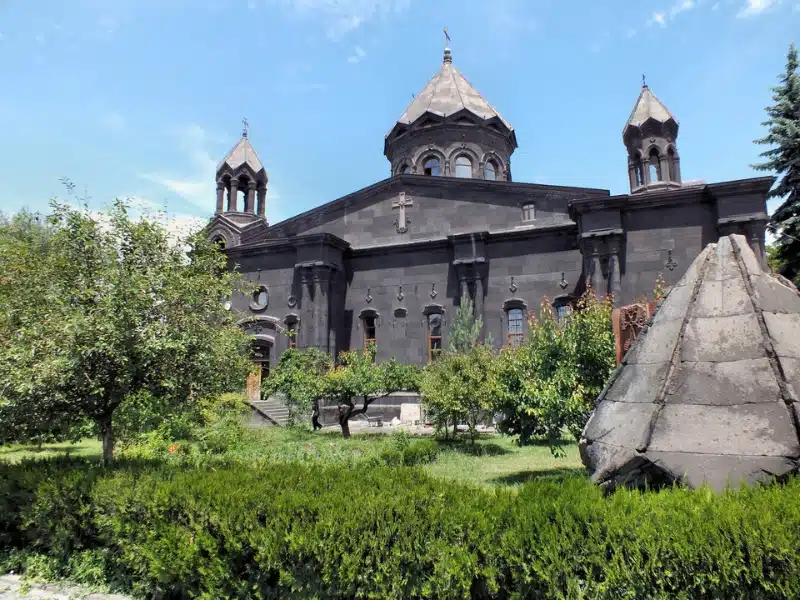
Debed Canyon
The Debed Canyon in northern Armenia is a stunning region known for its deep gorges, beautiful monasteries, and charming villages. The region has plenty of hiking, but it’s best known for its trio of historic monasteries.
The 10th-century Sanahin Monastery is just outside Alaverdi and easily accessible by car. A UNESCO World Heritage Site, the complex includes several buildings, including the main church, a 13th-century bell tower, a library, and several chapels. The main church, known as the Cathedral of Sanahin, is one of the oldest surviving churches in Armenia and is known for its intricate carvings and decorations.
The Haghpat Monastery, founded in the 10th-century, is an important medieval center of culture and learning and a UNESCO World Heritage Site. The main church, the Cathedral of Surb Nshan or Holy Sign, is a notable example of Armenian religious architecture and is incredibly atmospheric inside.
Akhtala, also known as Pghindzavank, is a 10th-century Georgian Orthodox monastery whose name means ‘copper mine monastery’, as it was built on a site with rich copper deposits. The main church, known as the Church of the Holy Mother of God, is a notable example of Armenian religious architecture, with fabulous 13th-century frescoes.
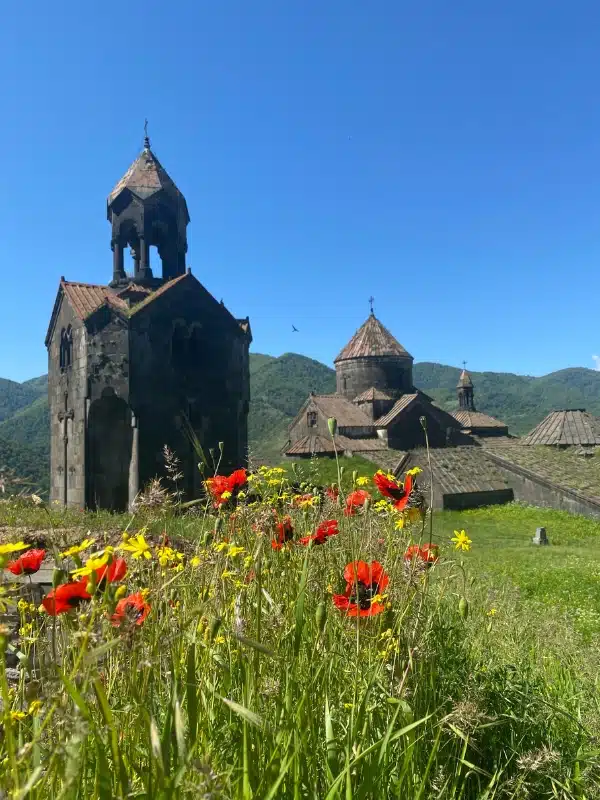
Lake Sevan
The best place to experience Lake Sevan, the largest body of water in the Caucasus, is in the town of Sevan. In summer, you can swim, sunbathe on its beaches, and take boat trips onto the lake.
The 9th Sevanavank Monastery is perched on a hilly peninsula and offers stunning views over the lake. To the south, Hayravank Monastery overlooks the lake from a rocky outcrop.
Sevan trout is the endemic species of the lake, and as you drive the shore, you’ll see people selling fresh and smoked trout from roadside stalls. However, the species is endangered due to competitors being introduced into the lake, including common whitefish, goldfish, and crayfish.
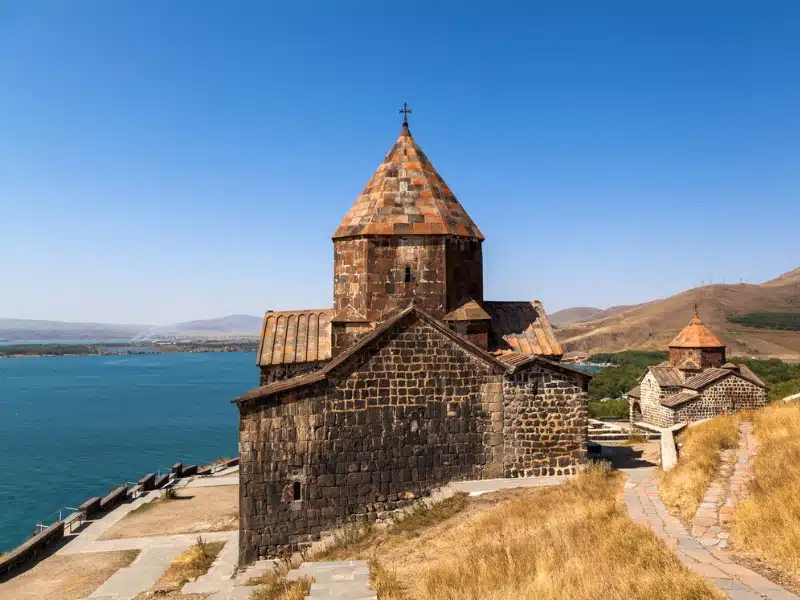
Spot Khachkars
A khachkar is a carved memorial stone bearing a cross characteristic of medieval Christian Armenian art. The term is derived from the Armenian words khach, meaning ‘cross,’ and kar, meaning ‘stone.’ Khachkars are so important that they have a spot on UNESCO’s Intangible Heritage list.
Khachkars can reach 4.9 feet / 1.5 meters in height and are often found in cemeteries, roadsides, public squares, or other community spaces. They are carved and placed to celebrate victories, to grieve loss, worship, and to communicate with the eternal world.
The stones are often very beautiful and located in locations with far-reaching views. I loved photographing these powerfully evocative stones as we traveled through Armenia.
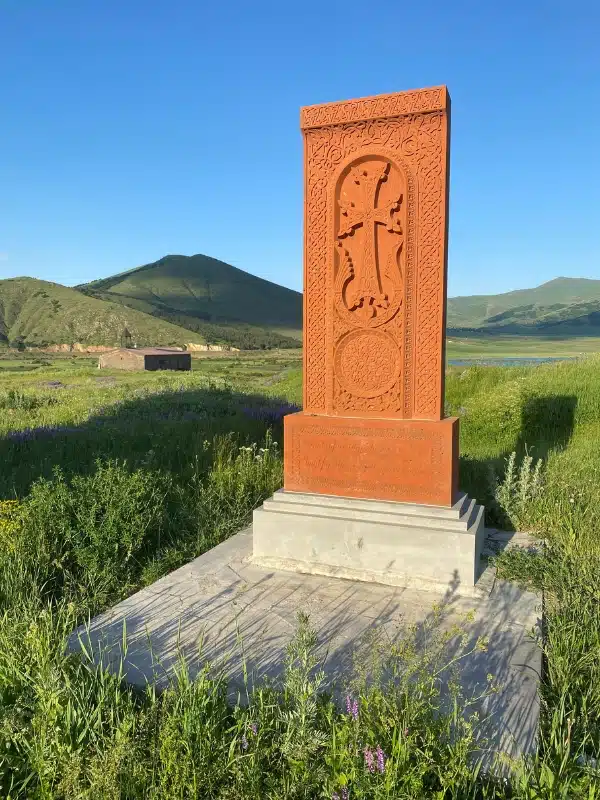
Dilijan National Park
The Dilijan National Park, often called the ‘Switzerland of Armenia,’ is a stunning natural sanctuary stretching over five mountain ranges. Known for its lush forests, alpine meadows, and rich biodiversity, the park is home to bears, lynx, wolves, eagles, and wild boar.
Start in Dilijan, known for its quaint architecture and lively arts scene. The town is located on the Aghstev River surrounded by beautiful alpine mountains. You can visit the Tourist Information Centre and find guides and trips to help you see the park and wildlife.
There is a network of well-marked hiking trails that meander through dense woodlands and along scenic rivers. Use the excellent Hike Armenia app if you plan to go without a guide. There are also five medieval monasteries in the park, the best known of which is Haghartsin Monastery, meaning ‘the soaring eagle’.
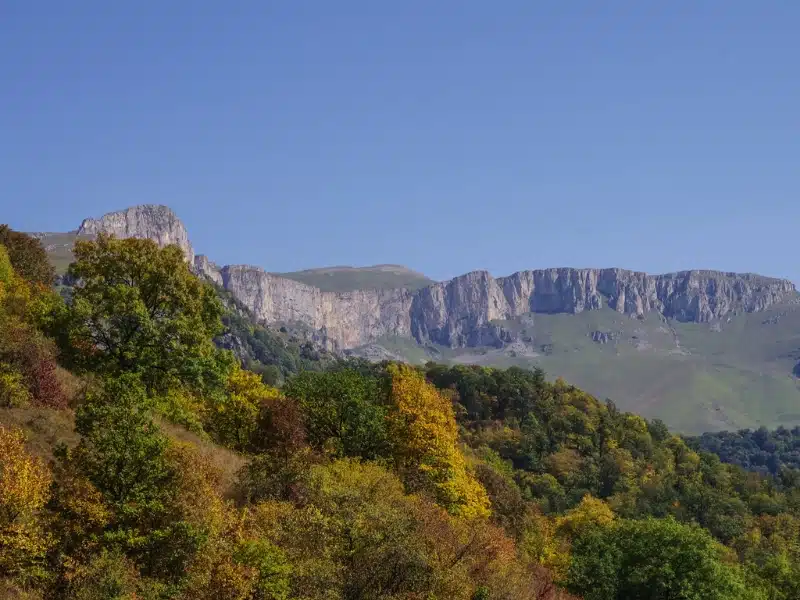
Armenia’s Liquor
Oghi, often referred to as Armenian fruit vodka, is a traditional Armenian distilled spirit made from various fruits like mulberries, apricots, peaches, plums, and grapes, each imparting its unique flavor to the final product.
This potent drink, which can range in alcohol content from 40% to 60%, is a staple in Armenian celebrations and social gatherings, and you may well be offered a tot at some point. Be aware that it is incredibly strong and left me unable to speak for a few minutes!
Armenia’s other famous liquor is Ararat Brandy, often called Ararat Cognac due to its brandy-making traditions inspired by French methods. Produced at the Yerevan Brandy Company, Ararat Brandy has become known for its exceptional quality and is synonymous with Armenian culture and hospitality.
Visit the Yerevan Brandy Factory for guided tours and tastings. These offer insights into the brandy-making process and the history of this iconic Armenian spirit.
Shaki Waterfall
Shaki Waterfall is a beautiful natural attraction about 6km from the town of Sisian. It is on the left side of the Vorotan Gorge and was formed by basalt lava flows over the years. The waterfall is 18 meters high.
There are a couple of local legends associated with Shaki Waterfall. One tells the story of a conqueror captivated by a girl named Shaki. The conqueror gave Shaki the option of being his or not. Shaki chose the second option and threw herself from a high rock, causing her dress to open and transform into a waterfall.
Another legend says that a princess was once lost in the area and was found by a shepherd who fell in love with her. The princess was eventually rescued by her father, but the shepherd was heartbroken and jumped off the waterfall – possibly another version of the first legend!
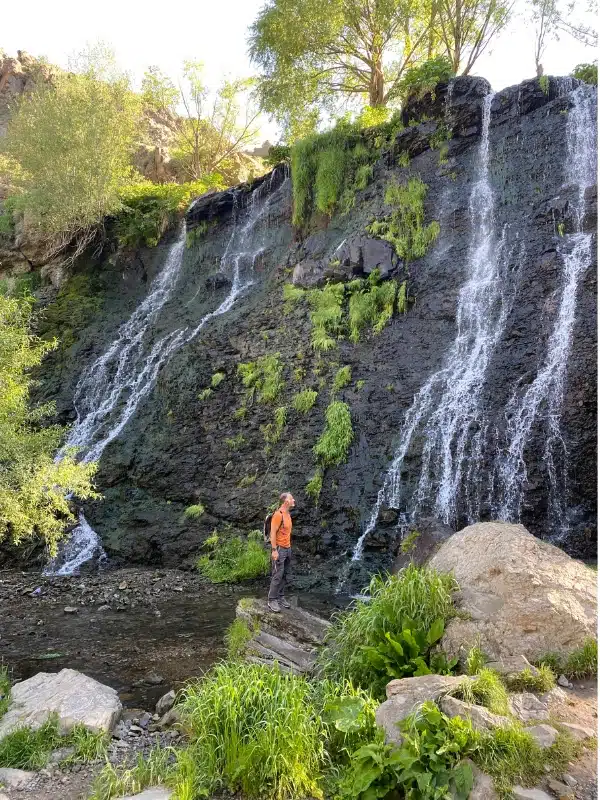
Garni Temple
Standing at the edge of a cliff overlooking the Azat River, the beautiful pagan Temple of Garni was built in the 1st century CE and is a rare example of Greco-Roman architecture in Armenia.
The temple is part of the fortress of Garni, which was strategically significant for defending the major cities in the Ararat Plain but collapsed in a 1679 earthquake. The site was excavated in the 20th century and reconstructed between 1969 and 1975, using the original architectural elements wherever possible.
A short hike from the temple will take you to the Garni Gorge, where you can see basalt column cliffs that feature tube-like rock formations known as the Symphony of the Stones.
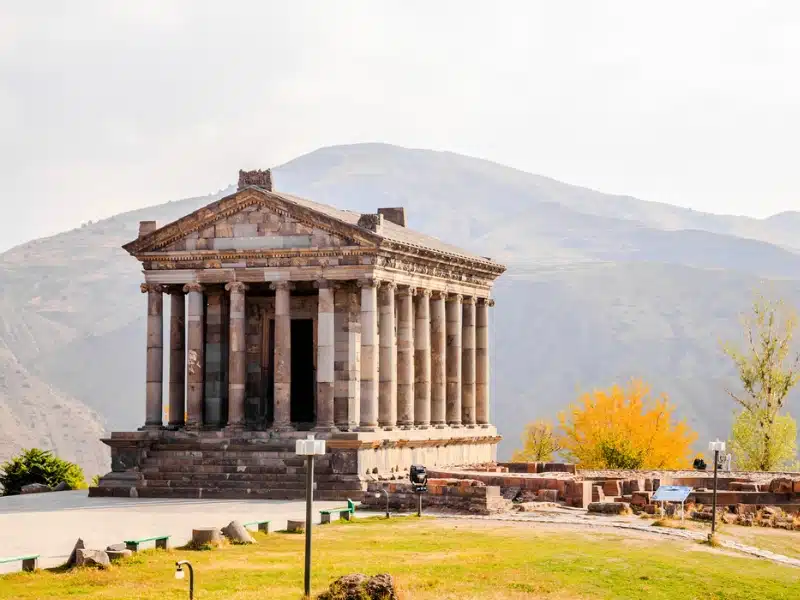
Zorats Karer
One of our favorite places in Armenia is the mystical Zorats Karer, also known as Carahunge or the Armenian Stonehenge. An ancient Middle Bronze Age archaeological site, Zorats Karer is thought to have been a prehistoric observatory.
Carahunge, which means ‘speaking stones’ in Armenian, comprises 223 stones arranged in a circle flanked by southern and northern ‘arms.’ About 40 stones are formed into an ellipse in the middle of these stones. The size of the stones ranges from 0.5 to 3 meters, and the heaviest weighs up to 10 tons.
Some of the standing stones have smooth holes bored through them. Looking through them at eye level, we thought they corresponded with landmarks in the surrounding landscape, like Mount Ukhtasar. Looking north from Carahunge, Pilgrim Mountain can clearly be seen. It is home to the Ukhtasar Petroglyphs, over 2,000 decorated rock fragments that extend to the foot of the mountain.
The site covers an area of seven hectares, and artifacts, including bronze swords, fragments of beads made from antimony, and potsherds (broken pieces of ceramic material), have been excavated and traced to the 2nd millennium BC.
We visited in June, and the site was empty of other people, free to enter, and blissfully peaceful – the exact opposite of its namesake in the UK! We spent a few hours here wandering amongst the stones, feeling their smooth edges and admiring the vast and wild landscape around us.
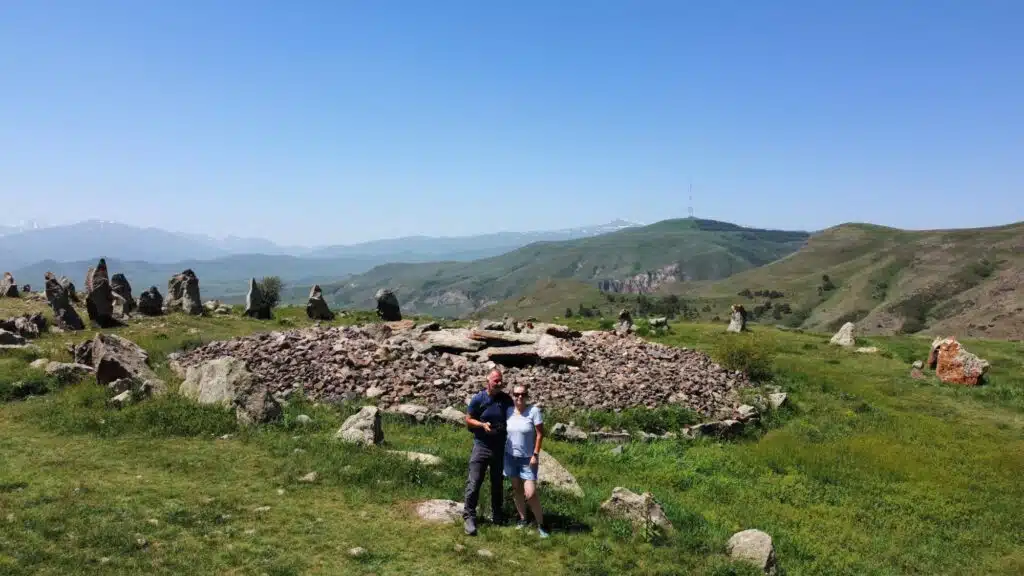
Try Armenian Food
Traditional Armenian cuisine is a delightful blend of rich flavors and fresh ingredients that reflect the country’s diverse geography and centuries-old culinary traditions.
Central to Armenian dining is lavash, a soft, thin flatbread often baked in traditional clay ovens, which accompanies almost every meal. Meat is also prominent, with dishes like khorovats (barbecued meat) and dolma (stuffed grape leaves) being favorites.
Vegetables and herbs are staples, showcased in dishes such as tabbouleh-like eech and spicy muhammara. Soups like spas, a tangy yogurt-based soup, and khash, a hearty soup made from cow’s feet (we didn’t try that one!) highlight the inventive use of local produce and livestock.
Armenians are also known for using fruit in both savory and sweet dishes, such as apricots and pomegranates, which add unique flavors to savory dishes and desserts like gata (a sweet croissant-like pastry), baklava, and ttu lavash, sour plum rolls.

Khor Virap Monastery
Khor Virap Monastery is one of the most iconic and historically significant sites in Armenia. It is known for its stunning location and profound religious heritage. Situated in the Ararat Plain, 750 meters (1.2km) from the closed border with Turkey, Khor Virap offers breathtaking views of the majestic Mount Ararat.
The monastery’s history dates back to the early Christian era. It is famously known as the place where Saint Gregory the Illuminator, the patron saint of Armenia, was imprisoned for 13 years in a deep underground pit that is still accessible to visitors. King Tiridates III ordered his incarceration due to Gregory’s Christian faith. According to legend, Gregory survived this ordeal and ultimately converted the king to Christianity, leading to Armenia becoming the first nation to adopt Christianity in 301 AD.
Due to its proximity to Yerevan, Khor Verap can get very busy, particularly on weekends and holidays. For a more peaceful experience, try to visit on a weekday if possible, or venture where many don’t and climb up the small rocky hill at the rear of the monastery to the tall iron cross flying the Armenian flag.
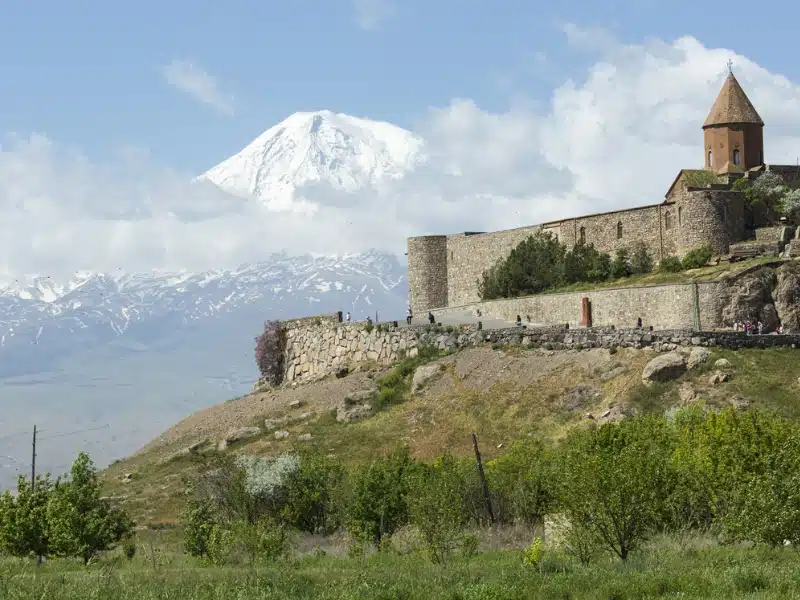
Khndzoresk Swinging Bridge
Khndzoresk Swing Bridge spans 160 meters over a dramatic gorge to the abandoned cave village of Khndzoresk.
To get to the bridge, you need to go down and back up on the return, climbing 436 punishing steps, but it is truly worth it! On the other side, you can explore the old cave houses and visit the tiny church in the woods surrounding the ancient village.
If you’re traveling independently, you may want to get a taxi from Goris due to the difficult track from the main road to the bridge car park, which is about 3km long. The track may not be passable in a regular car, especially if it’s been raining, and then you will definitely need a 4×4.
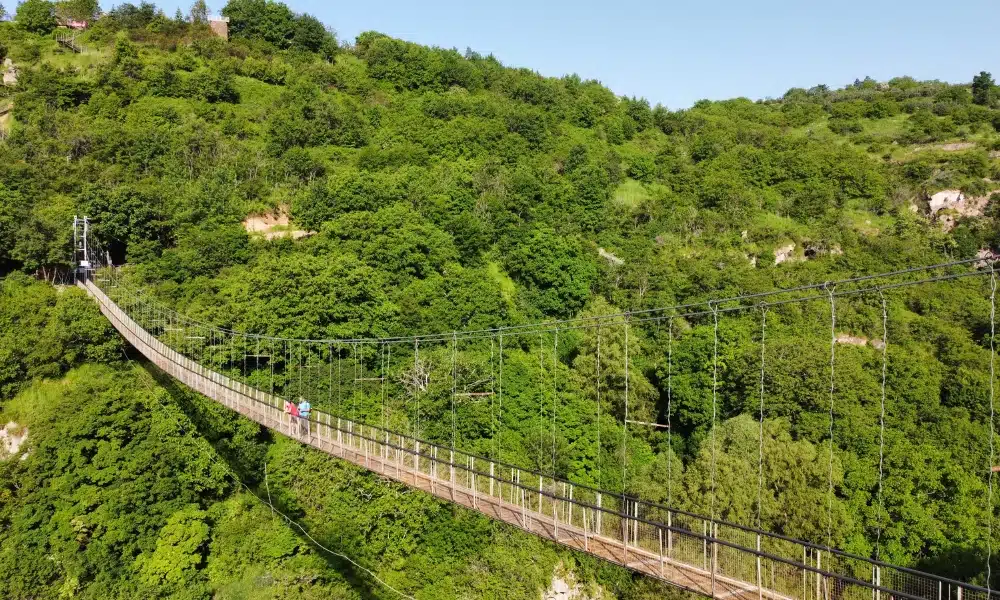
Tatev
If you’re touring Armenia in a car, you can drive to Tatev along the incredible H45 road, stopping at the Devil’s Bridge before climbing to Old Tatev and the monastery. Or, you can stop north of Tatev at Halidzor and take the Wings of Tatev, the world’s longest reversible aerial tramway, which offers stunning panoramic views.
The driving option requires driving there and back again unless you’re on a one-way trip south to Iran. The Wings of Tatev cable car option costs 7650AMD (around $19) for a round trip and requires a timed booking in summer.
We did both while researching, but if you can only do one, we preferred the freedom of driving and stopping to explore the Devil’s Bridge on the way.
The bridge was created by warm mineral waters and sediments of calcium salts, which have been honed and polished by wind and water over millennia. Close to the bridge, you can swim in the warm springs, and if you’re feeling really adventurous, you can hike down to the river to see the hidden grottos below the springs.
Tatev Monastery is a 9th-century Armenian Apostolic monastery and fort (locals would flee inside its walls during raids) located on the edge of the Vorotan River Gorge, the deepest gorge in Armenia at 2,788 feet / 850 meters. The Monastery is one of the oldest and most famous monastery complexes in Armenia and was a center of learning, enlightenment, and spirituality. The whole area is a UNESCO World Heritage Site.
Make sure to find the Gavazan Column. Built in 904, this unique piece of architectural engineering is an 8-meter-tall stone pillar. As a result of seismic tremors, and even at the touch of a human hand, the pillar tilts and then returns to its initial position. It is said to be so sensitive that the locals used it in medieval times to warn of impending attacks.
Noravank Monastery
Noravank Monastery is set among the red cliffs and rugged landscapes of the Amaghu River Gorge. Founded in the 12th century, the monastery complex consists of several structures, the most notable being the Surb Astvatsatsin (Holy Mother of God) Church, renowned for its intricate carvings, intricate khachkars, and a unique stone staircase leading to its second floor.
Noravank is celebrated not only for its architectural beauty but also for its significant religious and historical importance. The monastery is closely associated with the prominent Armenian architect Momik, whose work is seen in the ornate decorations and sculptures throughout the complex.
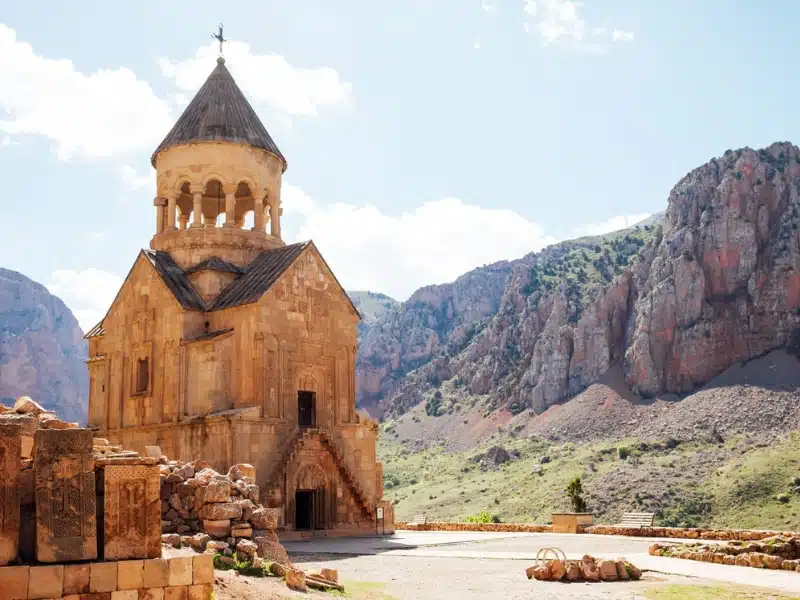
Sample Armenia’s Wine
Armenia boasts a winemaking tradition that stretches back over 6,000 years, making it one of the oldest wine-producing regions in the world, alongside neighboring Georgia. The country’s diverse climate, fertile soil, and ancient grape varieties contribute to the unique character of Armenian wines, with the indigenous Areni grape being the star of many celebrated reds.
Areni, in the heart of Armenia’s wine-producing region, is the best place to visit for wine tourism. Numerous vineyards and wineries in and around the town offer tastings and tours that provide insight into the winemaking process and the long history of Armenian wine. We would recommend either the intimate Momik Wines or the larger Areni Wine Factory, a name that lingers from Soviet times.
Archaeologists have discovered the world’s oldest winery, dating back to 4100 BC, at the nearby Areni-1 cave complex. The cave complex is also known as ‘Birds Cave’ or T’rchuneri in Armenian. You can explore the cave and learn about the ancient winemaking techniques used by the region’s early inhabitants.
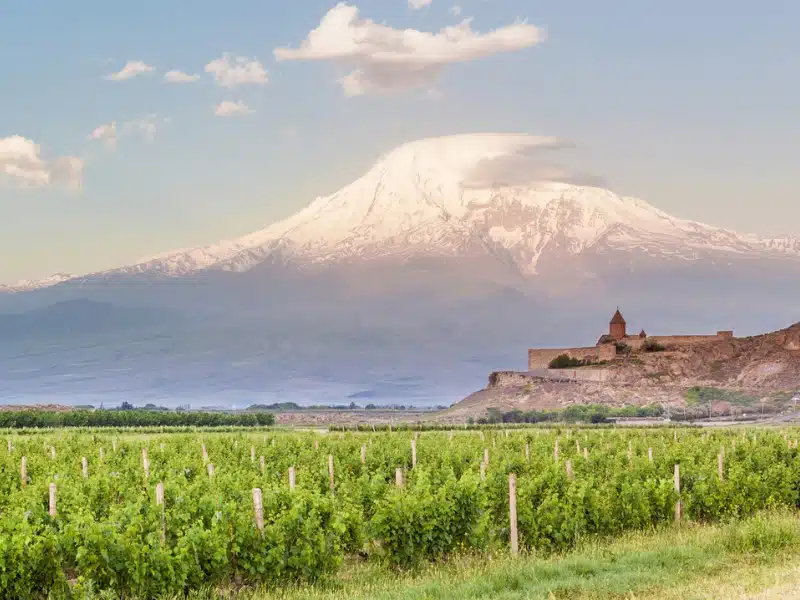
Geghard Monastery
UNESCO Geghard Monastery is a 4th-century monastery founded by Gregory the Illuminator at the site of a sacred spring inside a cave partially carved out of the adjacent mountain. The main chapel was built in 1215, and the monastery complex includes several churches and tombs, most of which are cut into the rock.
The medieval buildings complex is set in a landscape of great natural beauty. It is considered one of the most important examples of Armenian medieval architecture, showcasing an incredible mix of natural and man-made beauty.
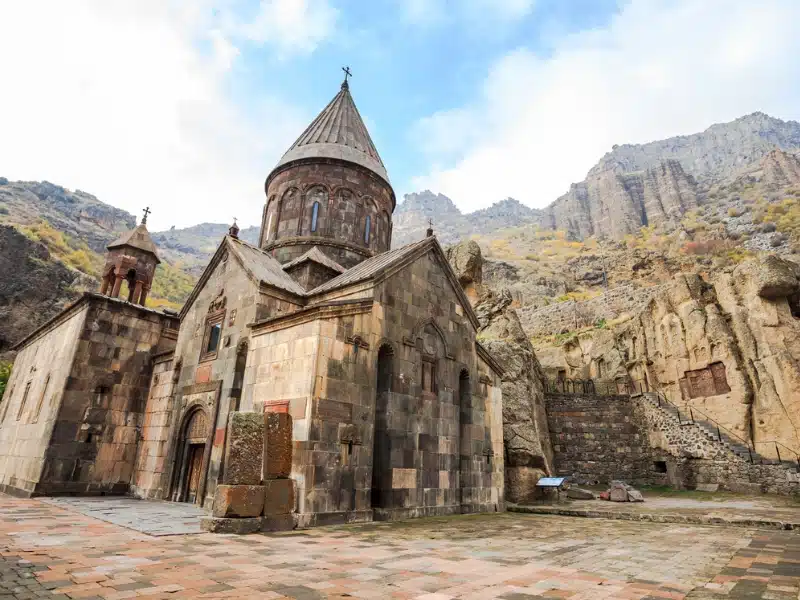
Etchmiadzin
Etchmiadzin, also spelled as Ejmiatsin or Vagharshapat, holds profound significance as the religious center of Armenia and the seat of the Armenian Apostolic Church. Close to Yerevan, Etchmiadzin is home to the Etchmiadzin Cathedral, one of the oldest churches in the world, dating back to the early 4th century. According to tradition, the cathedral was built upon the orders of Saint Gregory the Illuminator, who spearheaded the Christianization of Armenia.
Etchmiadzin Cathedral is the largest of the city’s UNESCO sites, with the others being St. Hripsime Cathedral, St Gayane Church, Shoghakat Church, and the 7th-century Zvartnots Cathedral, now in ruins but still attracting worldwide attention for its imposing Ionic stone columns, topped with ornate carvings.
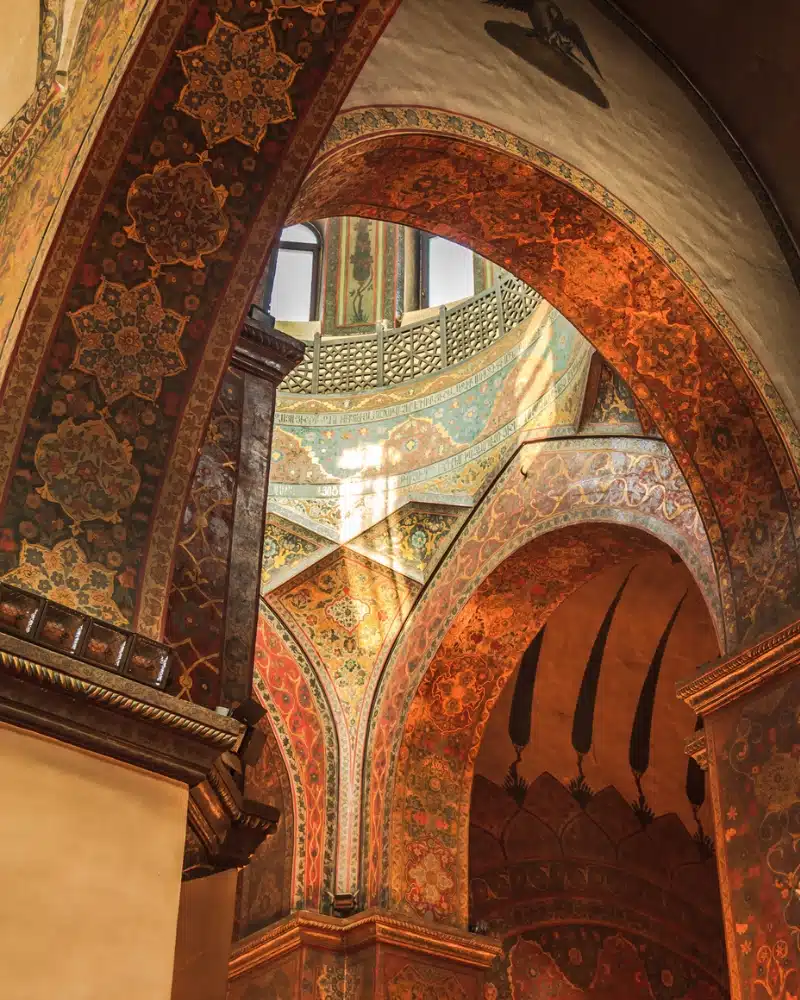
Amberd Fortress
Amberd Fortress, situated on the slopes of Mount Aragats, is a medieval fortress and palace complex dating back to the 7th century. In Armenian, its name translates to ‘fortress in the clouds,’ reflecting its lofty location at an altitude of 2,300 meters (7,500 feet) above sea level.
The architecture of the Amberd Fortress, which played a crucial role in the region’s defense, is characterized by its strategic placement and sturdy stone construction, including defensive walls, towers, and a fortified palace. Despite centuries of weathering and occasional seismic activity, substantial sections of the fortress remain intact, offering visitors a glimpse into medieval Armenian military engineering and daily life.
The fort commands breathtaking views of the surrounding Aragats mountain range and the sweeping Ararat Plain. Its remote location and magnificent setting make it a popular destination for hikers and photographers.
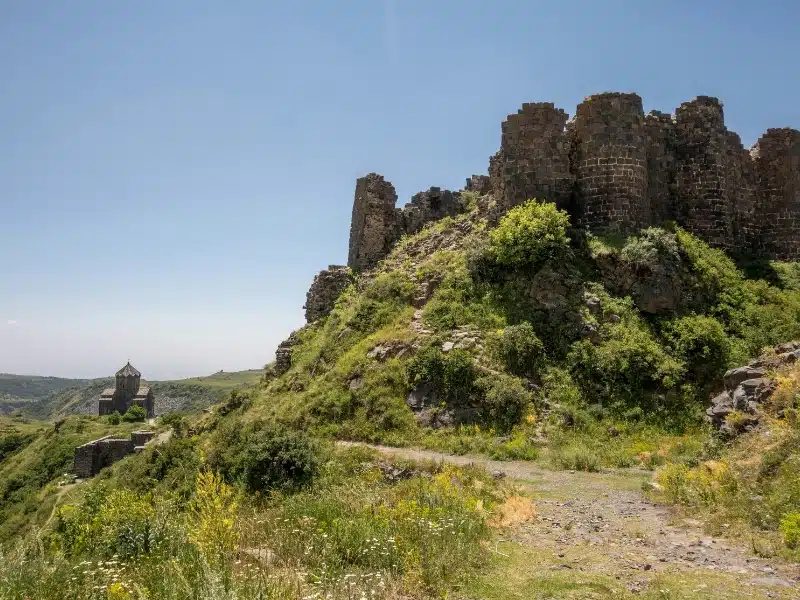
Armenia Practicalities
Is It Safe to Visit Armenia?
Armenia is generally safe for tourists, and crime levels are low. However, petty theft and crimes of opportunity can happen, so it’s important to keep an eye on your belongings.
Although a ceasefire exists, the eastern border between Armenia and Azerbaijan is closed, and tensions remain due to the conflict between both countries. Travel within 5km of these borders is not advised.
Make sure you have travel insurance you can trust when visiting Armenia. We recommend True Traveller for their 5-star TrustPilot reviews, variety of cover options, best activities cover as standard, great prices, and excellent service.
Transportation Options in Armenia
Self-Drive
Renting a car is an amazing way to see Armenia. We recommend hiring your car with Localrent.com, an aggregator of local car rental companies. They work with small car rental companies that only operate in their location and closely monitor the quality of their service. This means you get the best service for the lowest price.
For a real adventure, hire a campervan. There are no specialist campervan rental companies in Armenia, so we recommend Overlando in Tbilisi, Georgia, who offer campervan rentals with their fully equipped 4×4 campers, including the awesome (and very cute) UAZ Bukhanka, a Soviet classic named after a loaf of bread!
Check out our Armenia road trip itinerary for the best route!
Marshrutka Travel
Taking a marshrutka is a popular mode of transportation for locals and tourists, especially if you’re traveling on a budget. Marshrutkas are shared minibus taxis that run on fixed routes with flexible stop locations and sometimes flexible schedules and can stop anywhere passengers request.
Marshrutkas are generally safe and comfortable, but the quality of the vehicle and the skills of the driver can vary. Use the T-Armenia website to plan or ask your hotel or accommodation to arrange a service for you. Always agree on the price in advance.
Guided Tours
Guided day trips are more organized and structured than taking public transport, and you’ll be escorted at all times. You also have the advantage of knowledgeable guides who can share insights about Armenia’s culture and history. These are our picks of the best guided day tours from Yerevan:
Looking for road trip inspiration? Check out these top posts…
European Road Trip: Six Countries in 90 Days
Norway Road Trip: Four Unmissable Routes
Germany Road Trip: 8 Unmissable Routes
The Perfect Andalucia Road Trip: 10-14 Day Itinerary
The Ultimate Bucket List Italy Road Trip
Spring Road Trip from Britain to Portugal
Love it? Pin it!
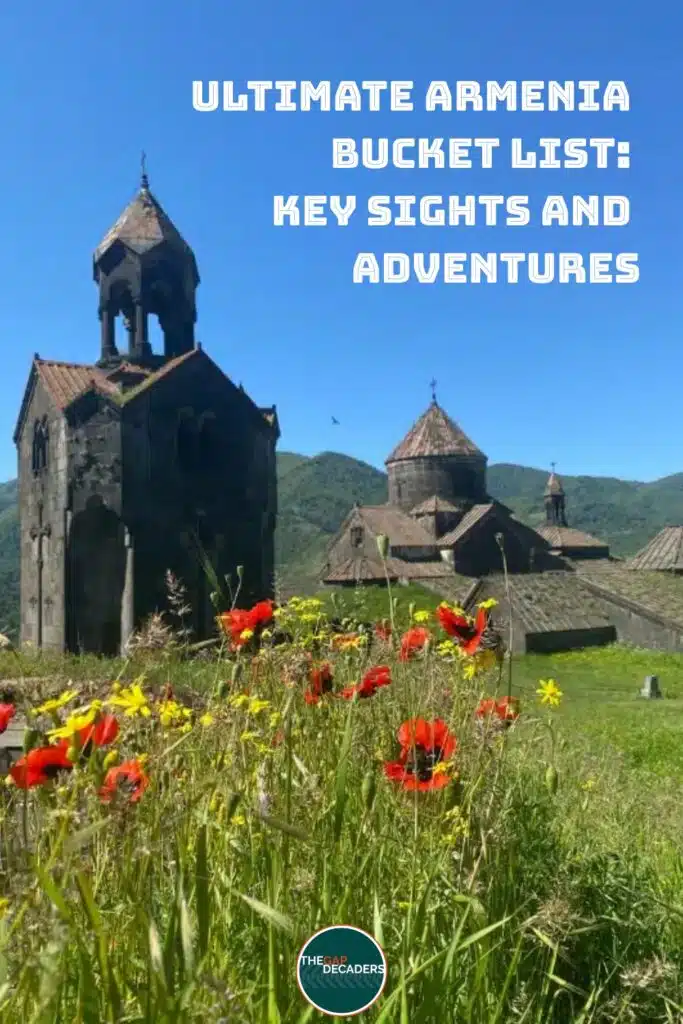
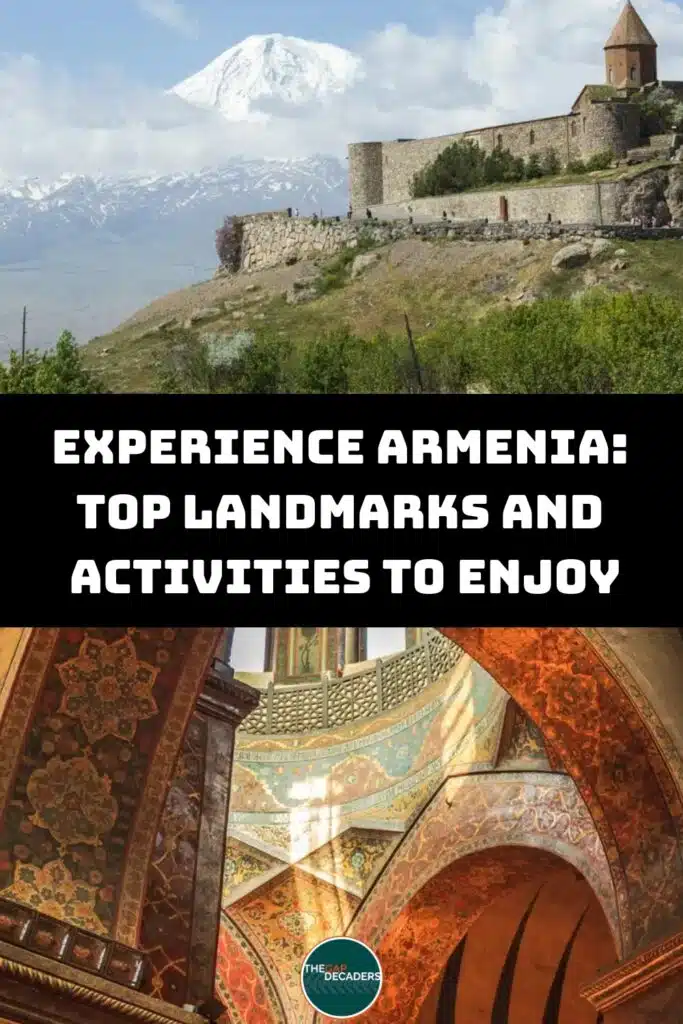

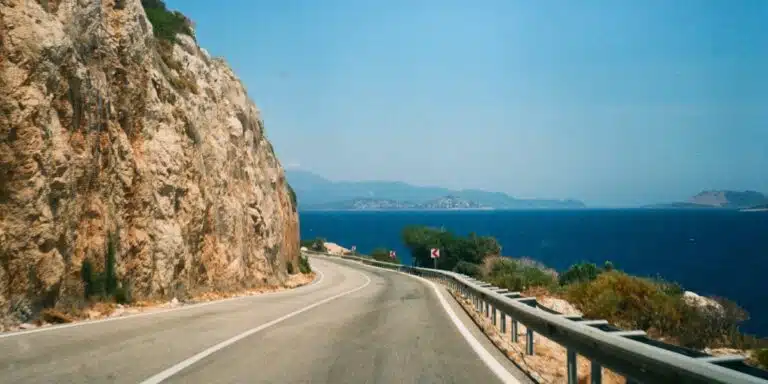

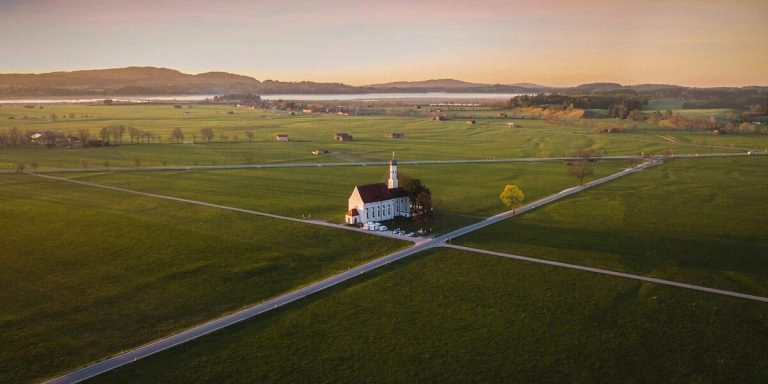
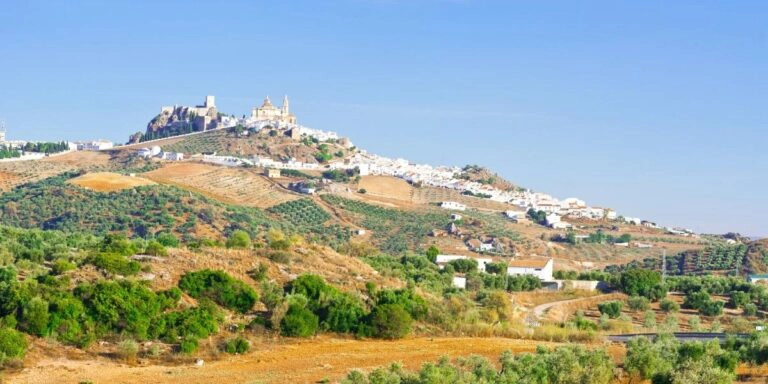
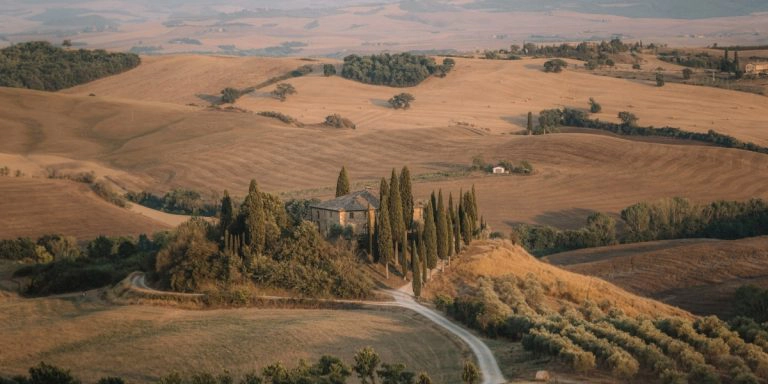

Hey MikeyChuckles, I was there last year! It’s not too hard to get to Shaki Waterfall. There’s a path that leads right up to it. Also, definitely check out the local eateries in the village nearby. Can’t go wrong with the fresh trout there!
hey izzy nicholls, was reading bout the Shaki Waterfall and wondering if it’s easy to get there? i’m not much of a hiker lol so hoping its not a crazy climb. also, any good places to grab a bite nearby? food’s half the adventure am i right haha